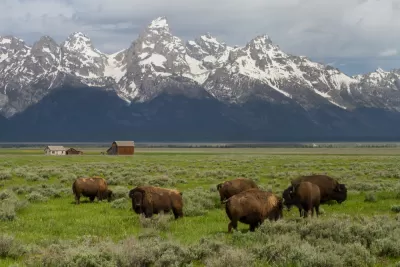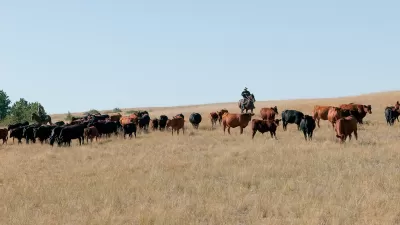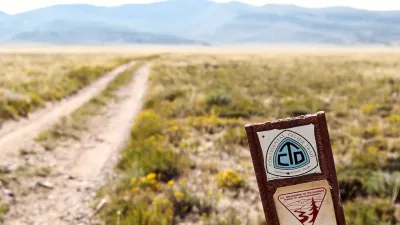After decades of protecting extractive interests, federal law could reverse course and put conservation on par with other uses.

Writing in High Country News, Jonathan Thompson analyzes the potential impact of the Biden administration’s proposed Public Lands Rule, which could “put conservation on a par with other uses of federal lands, such as grazing, oil and gas drilling and mining.” According to Thompson, this could lead to a “seismic shift” for public land management in the United States that would reverse the tendency to privilege development over conservation.
As the rule’s text itself explains, “This proposed rule is designed to ensure … public lands continue to provide minerals, energy, forage, timber, and recreational opportunities, as well as habitat, protected water supplies, and landscapes that resist and recover from drought, wildfire, and other disturbances.”
Thompson briefly describes the history of recent U.S. land management law, starting with the Federal Land Policy and Management Act (FLPMA) of 1976, which “required that public lands be managed for multiple uses and sustained yields rather than to maximize extraction” and prompted the ‘Sagebrush Rebellion’ of the following years and the rollback of conservation measures during the Reagan administration.
“The new rule would codify procedures developed over the last 40 years to provide consistency. But it would also beef up the protective strength of the provision by requiring ‘consideration of ecosystem resilience, landscape-level needs, and rapidly changing landscape conditions’ when designating and managing ACECs,” or Areas of Critical Environmental Concern.
But the rule is far from finalized or approved, and Thompson warns that “If Interior does not move quickly and a less conservation-friendly administration takes control of the White House in 2024, then the new rule could be tossed out relatively easily.”
FULL STORY: A ‘seismic shift’ for public lands?

Planetizen Federal Action Tracker
A weekly monitor of how Trump’s orders and actions are impacting planners and planning in America.

San Francisco's School District Spent $105M To Build Affordable Housing for Teachers — And That's Just the Beginning
SFUSD joins a growing list of school districts using their land holdings to address housing affordability challenges faced by their own employees.

The Tiny, Adorable $7,000 Car Turning Japan Onto EVs
The single seat Mibot charges from a regular plug as quickly as an iPad, and is about half the price of an average EV.

Seattle's Plan for Adopting Driverless Cars
Equity, safety, accessibility and affordability are front of mind as the city prepares for robotaxis and other autonomous vehicles.

As Trump Phases Out FEMA, Is It Time to Flee the Floodplains?
With less federal funding available for disaster relief efforts, the need to relocate at-risk communities is more urgent than ever.

With Protected Lanes, 460% More People Commute by Bike
For those needing more ammo, more data proving what we already knew is here.
Urban Design for Planners 1: Software Tools
This six-course series explores essential urban design concepts using open source software and equips planners with the tools they need to participate fully in the urban design process.
Planning for Universal Design
Learn the tools for implementing Universal Design in planning regulations.
Smith Gee Studio
City of Charlotte
City of Camden Redevelopment Agency
City of Astoria
Transportation Research & Education Center (TREC) at Portland State University
US High Speed Rail Association
City of Camden Redevelopment Agency
Municipality of Princeton (NJ)





























